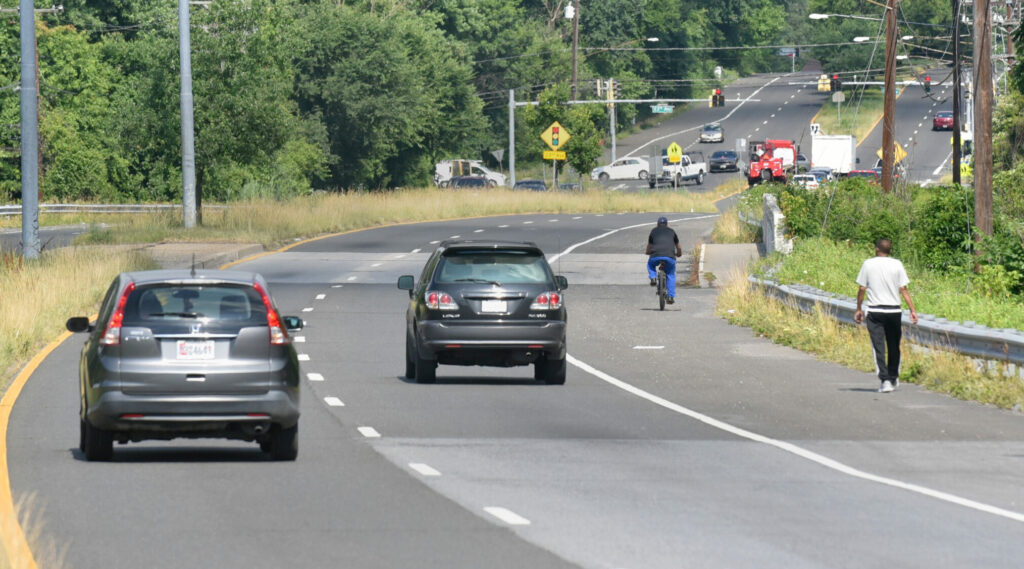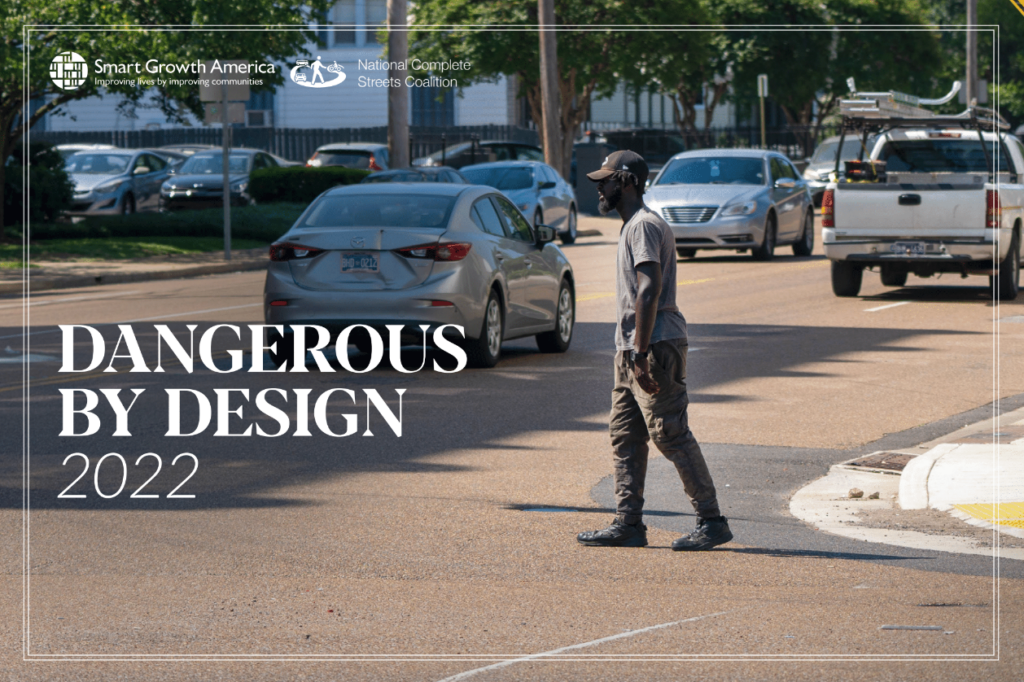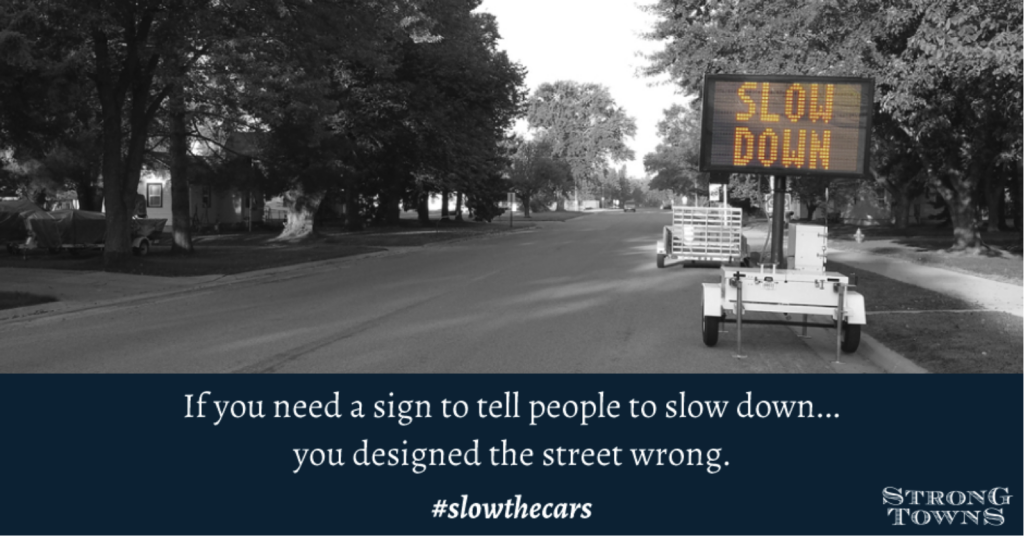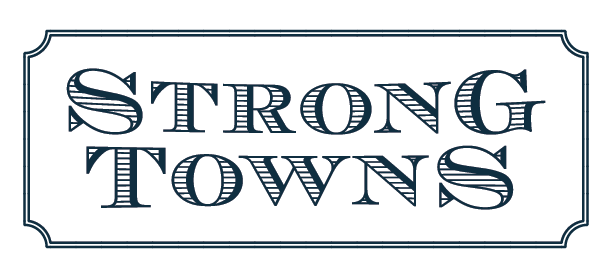When American transportation engineers design streets, they start the process using the values of the engineering profession. But they never stop to consider that these core values might not be shared by most of society, often failing to recognize that they even have underlying values at all. For the engineer, it’s just standard practice, and it leads to streets that are “dangerous by design.”

 This guest post is a supplement to the 2022 edition of Dangerous by Design, our landmark report on the alarming increase in people being struck and killed while walking, and how the way we design our streets is part of the problem. More than 6,500 people were struck and killed while walking in 2020, a 4.7 percent increase over 2019, even as driving decreased overall because of the pandemic’s unprecedented disruptions to travel behavior.
This guest post is a supplement to the 2022 edition of Dangerous by Design, our landmark report on the alarming increase in people being struck and killed while walking, and how the way we design our streets is part of the problem. More than 6,500 people were struck and killed while walking in 2020, a 4.7 percent increase over 2019, even as driving decreased overall because of the pandemic’s unprecedented disruptions to travel behavior.
Read the full report here
By Charles Marohn, Founder, Strong Towns
When American engineers design streets, they start the process using the values of the engineering profession.
The engineer doesn’t stop to consider that their values might be questioned by others, that their core values might, in fact, be rejected by most of society. It doesn’t cross their minds—not because they are immoral—but because they don’t recognize their values as values.
For the engineer, it’s just the way things are done. It’s standard practice. When an engineer sits down to design a street, they begin the process with the design speed. I’ve been in countless meetings where engineers presented design plans and even preliminary studies for a street project. Never, and I mean never, was any elected official or any member of the public asked to weigh in on the design speed.
Never once did I hear one of my fellow professional engineers say, “So, what are you trying to accomplish with this street in terms of speed?” No. The design speed is solely the purview of the engineering professional. Why?
Choosing a design speed is, by its nature, an application of core values. When we pick a speed, we are selecting among different, competing priorities. Is it more important that peak traffic move quickly or is it more important to maximize the development potential of the street? Do we compromise the safety of people crossing on foot to obtain a higher automobile speed, or do we reduce speeds in order to improve safety for people outside of a vehicle?
These are policy decisions. Shouldn’t public officials be given the broad range of options and be allowed to weigh them against each other?
Of course they should! So, why aren’t they?
Many of my engineering colleagues will reply that they, the engineers who design streets, don’t control the speed at which people drive and that speeding is an enforcement issue. Such an assertion should be professional malpractice. It selectively denies both what engineers know and how they act on that knowledge. For example, professional engineers understand how to design for high speeds. When building a high-speed roadway, the engineer will design wider lanes, more sweeping curves, wider recovery areas and broader clear zones than they will on lower-speed roadways. There is
a clear design objective (high speed) and a professional understanding of how to achieve it safely.
There is rarely any acknowledgement of the opposite, however: that slow traffic speeds can be obtained by narrowing lanes, creating tighter curves, and reducing or eliminating clear zones. High speeds are a design issue, but low speeds are an enforcement issue.

That’s incoherent.
The other pushback often given by professional engineers for why they, and not public officials, should set the design speed is that non-professionals are not qualified to do so. In 2016, I wrote “Engineers Should Not Design Streets,” an article for which many of my fellow professionals accused me of being gratuitously provocative. I was not.
The design of streets begins with the establishment of priorities. It begins with an application of core values. Engineers generally lack the background, training, and understanding to make such a complex decision. Indeed, I think engineers have become uniquely unqualified to do so.
For local streets, setting the design speed is something that should be done only by policymakers and only after a broad and deep dialogue with the community about values and priorities. This is not a decision to be made through the myopic prism of one professional silo. It is too important for that.
If you are an elected official, demand that you and your elected colleagues set the design speed on your streets. Not the enforcement speed (that is often set by state law and can be difficult to get a waiver for) but the speed at which 85 percent of traffic will naturally flow at or below. You have this power. Exercise it.
If you are an engineering professional, recognize that establishing the design speed for a particular street is something you have an obligation to discuss with, at a minimum, the elected officials in the community.
You must give them options and inform them of the full range of alternatives and tradeoffs. Humble yourself to serve their priorities and resist the temptation to bully them into following yours.
If you are a member of the public concerned about the health and safety of your community, demand that the design speed of your streets be part of the conversation. You have all the expertise you need to be part of a dialogue about core values. And you have the right; don’t let anyone take it from you. Setting these priorities—imposing a set of values—should not be the engineer’s responsibility. It should be the responsibility of the entire community.
(Strong Towns adapted this supplement from an essay in the book Confessions of a Recovering Engineer, by Charles Marohn. Learn more at StrongTowns.org)
Smart Growth America thanks Chuck and Strong Towns for their help and support with Dangerous by Design 2022.
